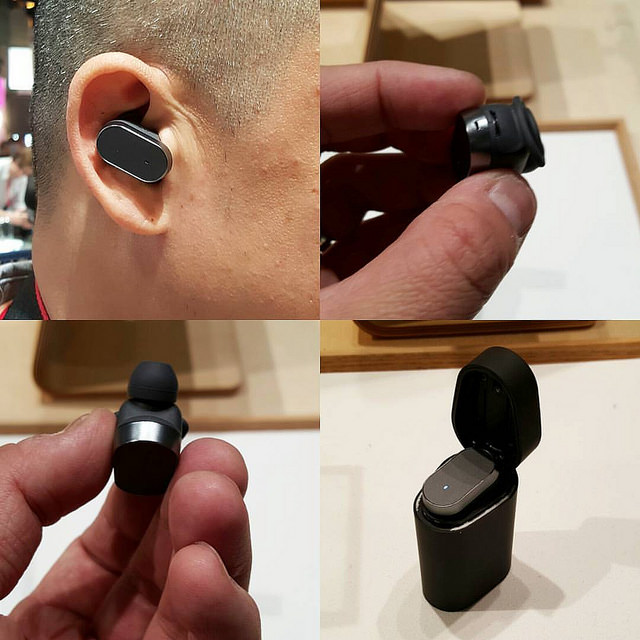Like this article? rabble is reader-supported journalism. Chip in to keep stories like these coming.
The ear is a multitasking orifice. It’s home to the smallest bones in the human body, the centre of our balance and it contains a thin membrane that enables our sense of hearing. It’s also a great place to measure temperature, blood flow, heart rate and even glucose levels. In other words, if you wanted a wearable that could talk to you, aid with directions, boost your hearing and record your vital signs you could do far worse than putting that device in your ear.
That’s the idea behind hearables, the next step in wearable electronics. If you saw the move Her you have a good idea of how the devices might work. In the movie Theodore (Joaquin Phoenix) is assisted by, and falls for the voice of Samantha (Scarlett Johansson). Samantha is an AI that keeps track of Theodore’s life and discusses the nature of that life from an earphone permanently inserted into his aural canal.
That earphone is becoming a reality. Early this month Doppler Labs took pre-orders for their Here Active Listening wireless earbuds. The earbuds, as well as acting as Bluetooth headphones also allow users to apply a custom graphic equalizer to the real world, in real time. Using a smartphone app, you can dial up spoken word, remove background noise and even apply real time effects (echo, reverb) to music and speech.
And Here isn’t the first hearable on the market. Back in September of 2014 Motorola introduced the Hint earbud, a hearable that looks remarkably like the ones in Her. The Hint could put turn-by-turn directions in the wearer’s ears and could handle all the questions and answers Google Now could understand and respond to. That same year Bragi went to Kickstarter to fund the development of the Dash, a hearable that could handle performance tracking, could act as a MP3 player and had body biometrics built in. The device is set to ship next month.
And, this week at the Mobile World Congress in Barcelona, Sony announced the Xperia Ear, that can feed you turn-by-turn directions, remind you of your schedule, read you news and dictate messages.
Why all the interest? Because unlike a watch, a phone or even augmented reality in glasses (like Google Glass), a hearable is private and relatively distraction-free. And, because it’s so close to the warm, thin membranes of the ear, it’s a perfect biometric unit. Of course any hearable is only as good as the software that listens and speaks through it. Fortunately not only are the personal assistants in phones getting better, but the engineers who created one, Siri, are developing an AI that would turn hearables into a cross between librarians and butlers. Viv Labs is developing artificial intelligence that can teach itself and can reach out to a wide variety of devices and information sources on the user’s behalf.
Users of Amazon’s sleeper hit, the Echo, are already in love with Alexa, an AI that listens all day waiting to read users an e-book, look up information or control a home’s smart devices by simple voice commands.
But, the Echo is a home appliance the size of a juice can. The trick with hearables will be to design an earbud so small and comfortable wearers won’t want to take it out. I other words, they will be the way users hear the world around them, and interact with a virtual private aural world inside their heads. That voice in your head would also be monitoring your vital signs and could encourage you to work harder, eat less or sleep more.
The devices could also prove to be disruptive for the hearing aid market. Those devices often cost thousands of dollars, as compared to the $200-$300 you’ll pay for a hearable. Plus, the hearable can do a lot more and are far more in tune with the lifestyles of digitally native consumers, who will be probably stay loyal to the brands and the devices as they age.
For many people that’s a frightening idea, and, as Her pointed out, the relationship with an intimate voice in your ear is fraught with challenges.
But, it is coming, and soon, not with a bang, but with a whisper.
Listen to an audio version of this column, read by the author.
Wayne MacPhail has been a print and online journalist for 25 years, and is a long-time writer for rabble.ca on technology and the Internet.
Photo: flickr/ Vernon Chan



